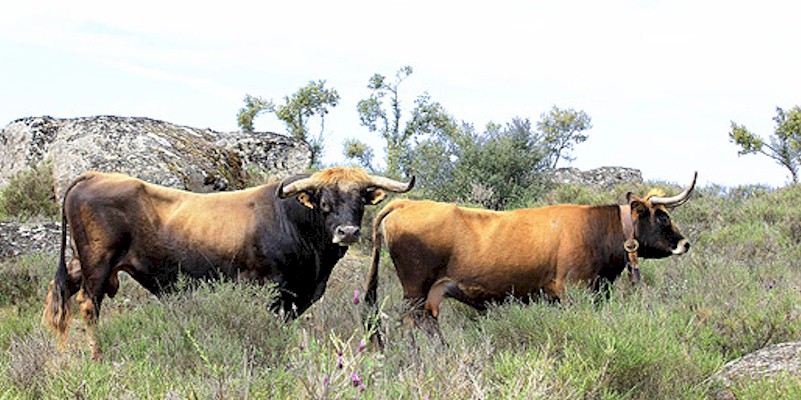Alistana-Sanabresa cattle are a crossbreed of Alistana and
Sanabresa cattle. They produce high yields of good quality meat even on poor
pasture. They are housed and given fodder only under extreme environmental
conditions.
Adult females are 131-142 cm high, weight 500-535 kg., and
have a chestnut coat that darkens towards their front. Adult males are 145-155
cm high, weight 650-900 kg., and have a chestnut coat with the same pattern as
females but darker.
They are very hardy. While they tend to be less productive than
more mainstream breeds, they adapt better to a wide range of environments (fewer
sanitary problems, fewer calving difficulties, and they are better at utilizing
local pastures).
Originally Alistana-Sanabresa cattle were used as draught
animals, for meat, and for milk. However, these days they are used almost solely
for meat production.
In the middle of the last century the Alistana-Sanabresa
breed had an estimated population of 37.000 animals. However, since drought
animals have become unnecessary, their numbers dwindled to around 1,400.
In the 70's the Spanish Ministry of Agriculture through the
Censyra (Breed and Selection Center) of Lugo, began breeding selected males to face
the lack of Alistana-Sanabresa stub bulls, loaning the animals, and providing
semen to breeders and creating a semen bank of the best animals.
In 1995, the Regional Agriculture Authorities began a
subsidies program to support endangered autochthonous cattle breeds. Three
years later the Alistana-Sanabresa Pedigree Book was created. In the same year,
Agriculture authorities supported the formation of A.E.C.A.S. the breed
association, that from that date have coordinated Alistana-Sanabresa farmers for
the development and conservation of the breed, organizing meetings, courses,
promotional activities, performance recording, etc. As a result their numbers
have been increasing, and there are now over 2,500 animals.
